In May 2018, Polish 3D printer manufacturer Sinterit returned with the Lisa Pro SLS system. The latest evolution from the original Lisa 3D printer, the Pro is engineered for industrial quality production on the benchtop.
By invitation to Sinterit’s test facility in Krakow, 3D Printing Industry spent three days learning about the new Lisa Pro, and putting the machine to the test.
Industrial SLS on the benchtop
Though essentially built with the same industrial design structure as its predecessor, the Lisa, the Lisa Pro has received three significant updates that will be taken into consideration in this review.
First of all, the Lisa Pro has been further functionalized by adding optional inert nitrogen gas control to the build chamber. With this addition, Sinterit can expand on its range of desktop ready SLS materials into a wider range of more industrial-grade powders.
Secondly, overcoming one of the most challenging aspects of SLS 3D printing, the Lisa Pro has a larger build volume: the print bed measures 150 x 200 x 260 mm (X x Y x Z) producing a build volume of 316mm. The Lisa 1, for comparison, is 150 x 200 x 150 (X x Y x Z) with a volume of 245 mm.
And thirdly, as hardware updates would be incomplete without software advances, the Lisa Pro comes with a number of under-the hood improvements, enhancing the capabilities of both operation software and 3D printer firmware.
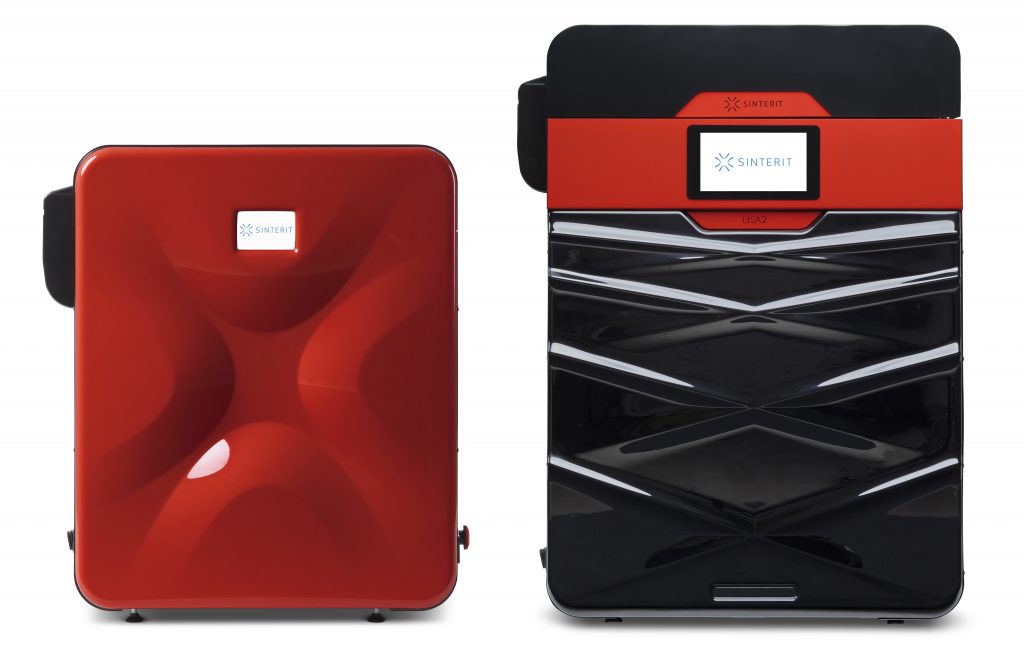
First impressions and materials
On first impression, the Lisa Pro appears well constructed to industrial standards, and presents a number of attractive design features, such as the front panelling, and an in-built 7 inch touchscreen. It has a robust, sturdy build, which helps deliver low vibration, precise movements and dimensional accuracy.
It is significantly bigger in size compared to the original Sinterit Lisa and fundamentally most of the hardware features are carried over from the earlier design: the X,Y gantry, print bed construction, source bed, recoater, reflectors and protective glass. The belt has a new design, and nitrogen input is simple, labelled clearly on the left hand side. We were also assured that, on release, all appropriate documentation for nitrogen tank attachment would be packaged along with the Lisa Pro.
At present, the company has made 7 materials: PA12 SMOOTH, PA11 ONYX, FLEXA BLACK, FLEXA GREY, FLEXA BRIGHT, FLEXA SOFT and TPE, with more to come in the near future. A selection of these materials were demonstrated during the Lisa Pro test day, but PA11 ONYX was used for this review.
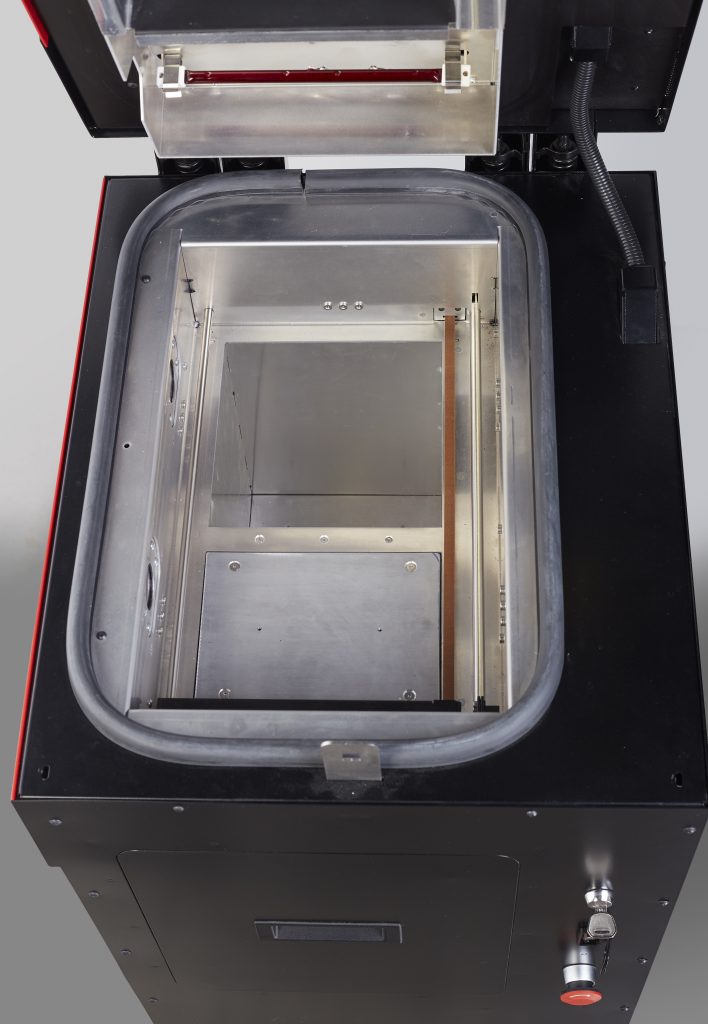
An attractive software package is also available for various institutions. With this package four different temperature settings can be controlled, allowing universities and companies to experiment with their own materials on the Sinterit Lisa Pro.
Sinterit Studio 2019 and setup
Sinterit Studio 2019 beta software was used during the test of the Lisa Pro.Though slicing speed was slightly slower in this pre-market phase, there was a marked improvement in the user experience and the overall aesthetics of the program. The whole slicing experience is step based to make it friendly to both new and experienced users and experts alike. In the program, different infill patterns are also suggested to the manufacturer, in order to reduce the printing time and increase performance.
Once we prepared our test file, an electronic housing case, Sinterit Studio 2019 calculated the estimated print time. In addition, the program communicated how much powder was required for the print, along with the fresh powder weight to be added to the source for to mixing. This feature is a welcome upgrade, as before ratios would have had to be manually calculated before printing.
From here, we moved to the touchscreen. Upgrades to the firmware in the machine aim to remove the risk of user error from setup until part removal. All in all, we found the software/firmware combination intuitive to use. The powder content, glass cleaning and oiling were all conducted under guidance of the in built software which was tremendously helpful – something we can attest to in the early models of the Sinterit Lisa too.
After machine preparation, we transferred the electronics housing test file to the 3D printer via USB and the process started.
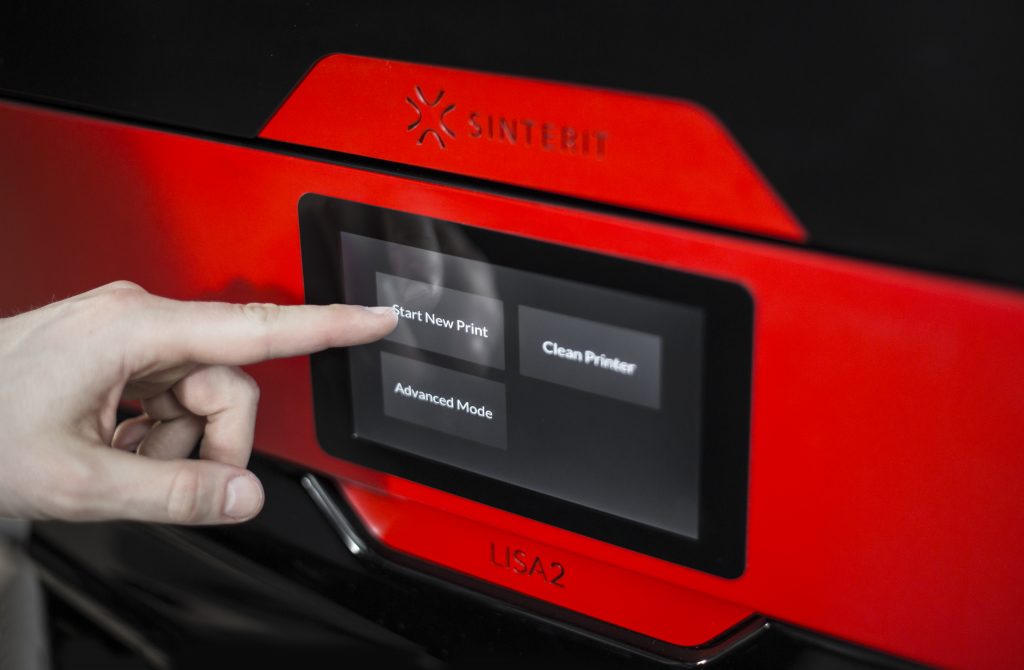
The end product
After leaving the Lisa Pro to print overnight (the job took around 11 hours total), we returned the next morning to process and finish our parts.
Using tools supplied alongside the 3D printer, we were able to quickly remove the majority of the powder cake. The compacted powder chunks were then set it aside for sieving, using the Sinterit Sieve, and recycling in a fresh print.
To remove the finer, more “sticky” powder particles of our object, we were then required to manually sand blast the casing in a separate auxiliary unit.
After repeating this process a couple of times, the parts were completely powder free and clean. Though manual, the process was very simple and well instructed and we did not encounter any issues with the steps involved.
The end parts, which were very rigid as per their material characterization, had an excellent surface finish, and both fitted into one another perfectly.
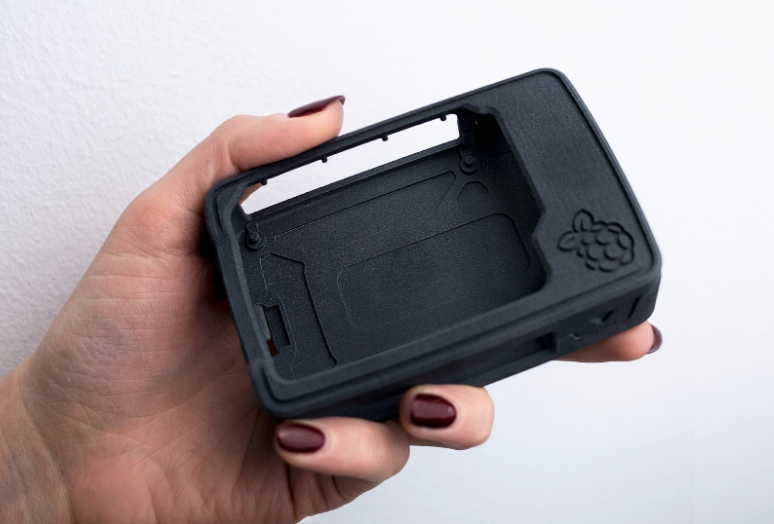
Though a good example of the mechanical capabilities of the machine, this casing did not make full use of the Lisa Pro’s build volume. In the picture below however, showing a full Lisa Pro powder cake, you get a much better idea of the scale possible with the Pro.
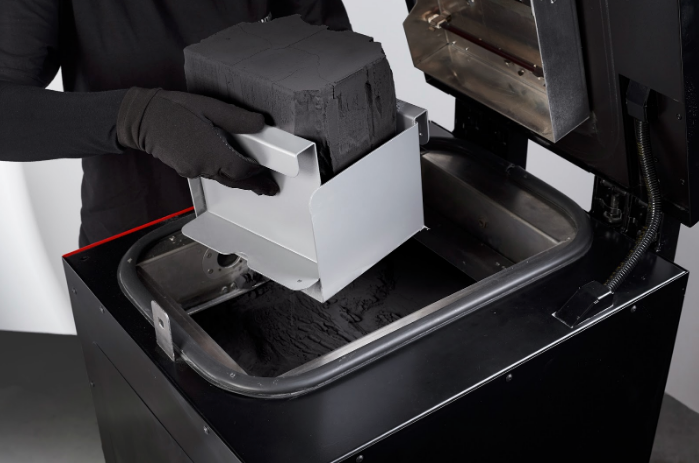
Verdict: the Sinterit Lisa Pro 3D printer
With the Lisa Pro and the company’s ongoing development, Sinterit is now focusing more on the materials – which is one of the major factors in helping users to look beyond typical FDM technology. Additionally, as Sinterit CTO and co-founder Michał Grzymała-Moszczyński explained on our visit, one of the the biggest challenges at the moment is to ramp up the production of benchtop SLS.
The Sinterit Lisa Pro is a well built and carefully engineered machine. With the new nitrogen system, as witnessed, there is a lot of potential to grow for materials availability, and the company, through initiatives like the university package, is working hard to expand this range.
We were impressed by the quality of the print produced during our testing, especially in terms of strength.Though the whole testing process was completed under supervision, we feel the software tools provided by Sinterit, including instructional guides and videos on the company website, are ample resources for first time users.
Overall, the printer delivers on the manufacturer’s claims. The Lisa Pro delivers on print quality, material versatility, and intuitive software features, with the added ability to go larger than before across the Z axis.
Nominate your 3D Printers of the Year and more in the 2019 3D Printing Industry Awards, open now.
For all the latest 3D printing news and reviews subscribe to the 3D Printing Industry newsletter, follow us on Twitter and like us on Facebook. Budding designer? Join 3D Printing Jobs now for new opportunities in this rapidly growing industry.
Featured image shows the Sinterit Lisa Pro 3D printer with Sinterit Sieve and sandblasting station. Photo via Sinterit



